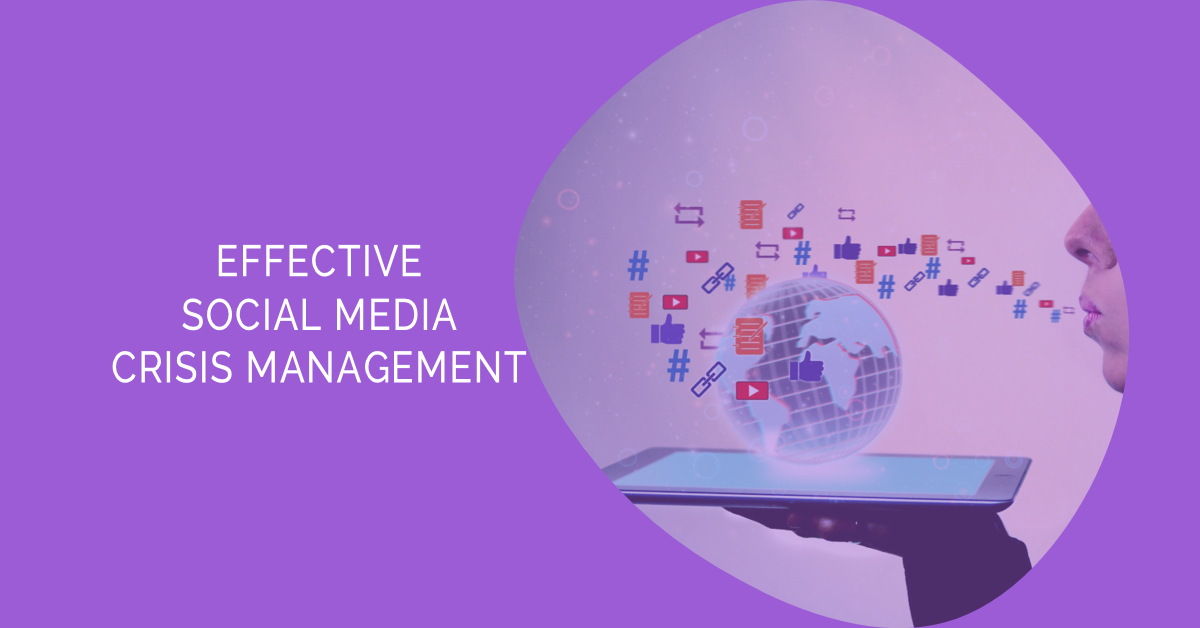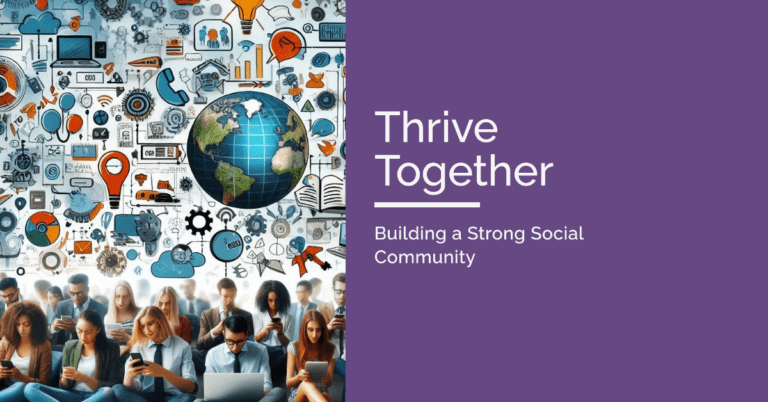Today, social media is a significant way for businesses to interact with customers. But what happens if something goes wrong?
Social media crisis management is now the essential element of any business plan. A single sloppy move can become a crisis and cost the brand its reputation.
But how do you cope with a social media crisis?
Let’s talk about what goes into handling a crisis on social media and creating a crisis response plan that helps mitigate the harm.
Understanding Social Media Crisis Management
Fundamentally, crisis management entails having the correct mechanisms to prevent unforeseen crises on social media. A social media meltdown can result from an unplanned tweet to an out-of-control PR nightmare.
A crisis plan is designed so that when a crisis does occur, your business can respond quickly and efficiently. A slight delay can transform an ordinary problem into a public relations nightmare when the crisis arrives.
What is a Social Media Crisis?
Not all social media negative press is a crisis. But how do you distinguish between a little problem and a social media meltdown? This usually happens during a social media disaster:
- Reputational damage: negative comments go viral and impact your reputation
- Potential business loss: customers could boycott your product or service if the crisis undermines trust
- Prolonged negative coverage: if it gets mainstream press coverage, it will expand beyond your social networks
On the other hand, even a few negative comments or reviews are typical. They could quickly be addressed without a complete crisis response.
How to Respond to a Social Media Outbreak
Use Social Listening
Social listening is one of the most potent weapons in your arsenal. It involves tracking discussions and mentions of your brand on various social media channels to catch early warning signs of a crisis. Social listening platforms can allow you to monitor your brand’s mentions, sentiment, and keywords in real-time.
With your eyes trained on what others say about you, you can identify negative comments before they escalate into a complete social media meltdown. For effective social media crisis management, using these tools helps you stay on top of things.
Implement the Crisis Plan
A robust crisis management plan is essential. This strategy serves as a checklist for navigating any emergency on your social media. It must list functions, responsibilities, communications avenues, and pre-selected processes for rapid resolution.
The crisis team should include PR, social media marketing, customer service, and legal people. That way, you can approach the crisis from every perspective. The social media manager is crucial in monitoring and addressing a problem in real time, but executing well requires a solid team.
Your crisis response team needs to execute the crisis management plan promptly. The sooner you respond with an intentional strategy, the more likely you will dominate the discussions.
Ensure your social media manager is prepared with all the details and keeps the crisis management team informed. By providing frequent updates, the team can adjust its reaction to changes in the situation.
Pause Scheduled Posts
If a crisis occurs, you don’t want to publish content that was supposed to go live. Stop all content marketing and promotion posts immediately, as they appear tone-deaf and rude.
If your social media management platform allows it, immediately suspend all scheduled posts and spend every moment resolving the crisis. This shows that your brand is taking notice and making the most of this moment.
Acknowledge the Issue
There is no reason to ignore a social media crisis. The silence can also be read as guilt or indifference.
The first step is to expose the issue on your formal social media. This is where open communication enters the fray.
Make your social media crisis message concise, easy to read, and empathic. Be careful with your words and take responsibility when necessary, but do not become defensive. This will calm your social media followers and communicate that your business is serious about resolving the issue.
Evaluation of Effect and Action Needs
This is not always a crisis that requires a swift intervention. It’s essential to know the extent of the problem, its prevalence, and how badly it has damaged your brand’s image.
You and your crisis management team must collectively determine whether an outcry should be discussed with the public or if the situation can be handled within your organisation in direct contact with those affected. Social listening could be beneficial in trying to figure out the impact of the crisis by analysing public opinion.
Develop an Overall Crisis Management Approach
When planning your crisis communication, create templates for different possible scenarios so you don’t have to begin again when something goes wrong. Social media crisis communication should always be consistent across social media, email, and press releases, and the same message should be spread across every medium.
Teams must interact internally to ensure that they are all aligned. This uniformity saves time from confusion or verbal ambiguity, which can worsen matters.
Communicate and Engage With Your Audience
During a crisis, the audience matters. Monitor your social media accounts for comments, questions, and feedback and respond to as many as possible. There must be no stock answers. People like authenticity and openness. If you still don’t have all the answers, tell your audience you’re looking into it.
Individual reactions have been shown to reduce anger or frustration on social media platforms and restore faith in individuals.

Guidelines for Social Media Crisis Management
Your crisis management plan is good, but there are a few best practices that will make your effort even better.
Prepare Your Employees For Social Media Disasters
Social media training is needed for any staff responsible for your company’s web presence. Know your brand’s social media policy and what to do in a crisis, and inform your team about it. You don’t want an employee who doesn’t adhere to protocol exacerbating the problem.
Run crisis scenarios for social media training. These exercises will help your employees feel confident handling a potential crisis on the spot so they know what to do when a real crisis occurs.
Prepare an Emergency Crisis Response Plan
Even the best crisis communication plan will not tackle every problem. It would be best if you never counted on the plan alone. That means figuring out other crisis conditions and having backup procedures should your main plan fall apart.
You never know how a crisis will unfold, so having alternative modes of engagement can save an organisation’s reputation.
Keep Watch Out For New Storms
The key to managing a crisis is prevention. Social media tracking apps allow you to see your readers’ trends over time. If you notice a change of voice or a spike in negative comments, a crisis is likely just around the corner.
Social listening applications can help you anticipate crises and stop them. Preventing future crises requires less work than repairing reputational damage.
Keep Your Communication Clear
And when it comes to a crisis, your organisation needs to be transparent with its stakeholders. If it’s your brand doing it, admit it. Clear messaging builds trust, and that trust can ensure your customers stick by you even when things get tough.
Not addressing the problem and not taking responsibility will only compound the situation, regardless of whether your brand is the cause. Explain what is being done to remedy the problem.
Use Influencer Marketing
Influencers can become valuable resources during a crisis. When you work with influencers, they can turn around negative sentiment. A credible influencer can express your brand message to people who already know you, which might prevent a social media disaster.
So, ensure you have a crisis management plan for your influencer marketing in which influencers can advocate for your brand.
The Power of Social Media Crisis Response.
Crisis communications on social media are a chance to remind your followers that your brand is human, helpful, and trustworthy. In a crisis, the strategy determines your brand’s fate.
Select the Correct Communications Channels.
When dealing with a crisis, you must choose a suitable means of communication. You’ll probably start with social media but don’t underestimate your website, blog, or email campaigns.
The comprehensive answer should consist of the following:
- Articles of social media focusing directly on the crisis
- Using email marketing to reach out to your customers
- Updates on your website or blog article to give more detailed information
- Having multiple channels allows you to reach the viewers wherever they are
Give Control To Your Social Media Manager.
Your social media manager is most likely in the hot seat during a social media meltdown, so they should have the resources to react. Involve your social media manager in crisis response planning and incorporate their voice into all internal crisis messaging.
You also want to ensure they have the tools to succeed, such as social media monitoring tools and a direct connection to the crisis management team.
Social Media and Crisis Management?
Your social media accounts are marketing collateral and your public voice. When a crisis occurs, they are the emergency communication platforms of choice.
For crisis management, here are some of the possible applications of social media:
- Communication during the crisis: with social media, you can react to a crisis at hand and keep your audience informed
- Direct responses: you can get direct reactions from your audience and make use of them in implementing your crisis management plan
- Massive reach: the reach of social media is immense; you can communicate with an enormous number of people at once
Crisis Communication: What Not to Do?
But when handling a crisis, there are three things you should never do:
- Don’t respond defensively: matters can worsen if you reply defensively or aggressively. Remain calm and professional all the time
- Broadcast: don’t go radio silent in a crisis; no one will know you’re on the right track. Even if you don’t have the answer at the time, share what you can
- Never be inconsistent: be consistent in your messaging across all social media platforms and messages. Inconsistent content will annoy your readers and harm their confidence
Coming Out of a Social Media Crisis?
When the crisis is over, you don’t stop. You think about what went wrong and how to prevent it from happening again. Conduct a post-crisis review with your crisis management team to determine what worked and what didn’t. This will help you fine-tune your crisis management plan for the next time.
What are some steps following a crisis:
- Rebuild trust: social media and content marketing will help you restore trust. Remain connected with your audience, work through any remaining issues, and show your brand has come out the other side
- Change and update policies: you may want to consider reworking your social media policy or crisis management process considering a future incident

Final Thoughts
A proper social media crisis management plan is necessary in today’s digital environment. Whether it’s a simple mishap or a complete crisis, your brand will be better off when armed with a strategy, emergency response, and clear communication.
Social media monitoring, listening, and training also prevent crisis scenarios and safeguard your brand’s image.







